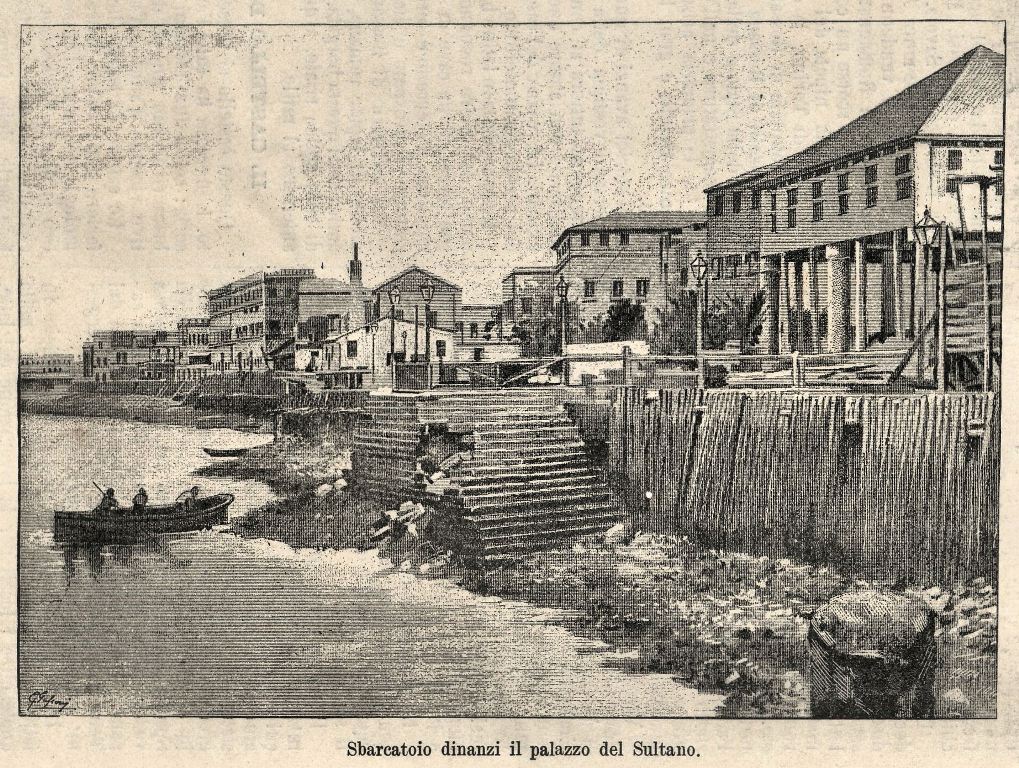The
Mass Graves of Zanzibar
 The number of Zanzibari killed outright in the revolution
has never been clear. Estimates range from 2,000 to 20,000. What is clear
however is that the casualties among the
Para-military police and the Revolutionary militia were in the minority. The
Field Marshal himself reports that he received a casualty report at 3:30 PM, on
the 13th, after the Sultan had fled and all organized government forces had been
defeated. He writes that in his victories at Ziwani, his total casualties for
both the storming of the armory and the beating off of the government
counterattack were 2 killed and 18 wounded. The losses among the Sultans'
soldiers in these 2 battles, which were about two hours apart, were 49 killed
and 81 wounded.
The number of Zanzibari killed outright in the revolution
has never been clear. Estimates range from 2,000 to 20,000. What is clear
however is that the casualties among the
Para-military police and the Revolutionary militia were in the minority. The
Field Marshal himself reports that he received a casualty report at 3:30 PM, on
the 13th, after the Sultan had fled and all organized government forces had been
defeated. He writes that in his victories at Ziwani, his total casualties for
both the storming of the armory and the beating off of the government
counterattack were 2 killed and 18 wounded. The losses among the Sultans'
soldiers in these 2 battles, which were about two hours apart, were 49 killed
and 81 wounded.
In the seizing all other government strong-points that morning, additional casualties occurred. However, the total of these losses in the field, including Ziwani, were only 9 Killed and 173 wounded among the militia, and 70 killed, and 401 wounded among the government troops. Another 818 police and Para-military soldiers surrendered during or after these battles. This grand total 653 killed and wounded among all combatants, on both sides, pales in relation to the thousands more that perished in the aftermath of these struggles.
Unfortunately, the Field Marshall seems to have been one of the barbarians. He not only took part personally in some of the more extreme atrocities he also continued to use the radio broadcasting facilities to encourage bloodthirsty acts by his followers.
Most of the larger Households in Zanzibar at the time would include a display of weapons, including old rifles with hand carved and inlaid elements which were handed down from one generation to another. The country estates of the leading citizens wouldalso usually include retainers who occasionally could be armed to serve as guards or escorts. These traditional practices, and the fact that many city dwellers fled to their cousins in the country when the fighting began near Stone Town, became a catalyst for slaughter. Humanity on the Island was shaken by a microcosm of ethnic cleansing unlike anything seen on the Coast before.
Here is an extract from the Field Marshalls writings describing one typical incident.
War is a horrible undertaking and the result is
always heavy destruction. Nothing
showed this more than the surprising battle on the 12th at Bumbwini
in the North, an area where many rich Arabs lived. This was a center for making
and storing arms, which the Arabs planned to use in their slaughter of Africans;
indeed, they had planned to launch this attack on January 13th. I had
learned of this through a young boy who was about to be executed by soldiers;
the men had already killed more than 40 people in the area and I was fortunate
to arrive there just as they were about to shoot the boy.
When
I interrogated him he admitted that fire-arms and ammunition were
The death toll from the systematic reduction of the large plantation houses and the other attacks on any gathering of perceived 'enemies' was horrendous. The pattern repeated over and over again was one of loyalists barricading themselves inside large houses with a few weapons while being surrounded by unruly mobs. The revolutionary militiamen would race from one such site to another in commandeered vehicles and upon arrival use their hundreds of newly acquired automatic rifles to blast the houses into submission.
The Field Marshall said of these battles, Only god can know how terrible the fighting was at that time; guns roared like heavy rain, and the battle raged throughout the Island.
After awhile the enemies abandoned their fortified houses and just fled into bush and eventually into the sea. Only a few escaped by piling into small boats. The others perished or were taken prisoner. The prompt killings of prisoners was not uncommon and many others died later due to harsh conditions in jail or in the in the new detention camps which were established after the blood lust had been spent.
A few days after the revolution, an Italian cameraman took the pictures on this page. They show the long lines of prisoners, the flight into the sea, the dead on the shore, the killing of prisoners, the transporting of bodies and the mass graves for the dead.
This page serves as a small memorial to all those who lost their lives during the revolution.

































































